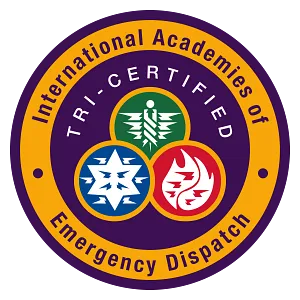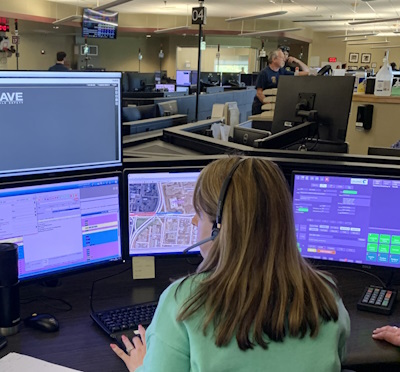Protocol-Based Call-Taking
 What protocol is used by Cincinnati 911?
What protocol is used by Cincinnati 911?
The Cincinnati Emergency Communications Center's 911 call-takers are certified by the International Academies of Emergency Dispatch in:
- Emergency Fire Dispatch (EFD)
- Emergency Medical Dispatch (EMD)
- Emergency Police Dispatch (EPD)
The Priority Dispatch System (PDS) gives emergency dispatchers decades of knowledge and wisdom in one comprehensive solution, empowering them to provide an objective, rational response to even the most distressing or unusual calls—regardless of their time on the job. Because even the most experienced dispatcher can forget during a frantic call, the PDS is built on a structured call-taking methodology, drawing on time-tested, scientifically validated protocols, as well as world-class training and certification to make sure the dispatch process is grounded in proven practices.
 Why use a protocol system?
Why use a protocol system?
We have an EMD/EFD/EPD program and use a protocol-based call-taking system on emergency calls because:
- 9-1-1 call-takers are the first first responders to any emergency we receive.
- Even though they are physically removed from the scene, they can still have an impact.
- They use the information that they gather to prioritize, address scene safety concerns, initiate a response, and provide dispatch life support instructions to callers.
Expansion from Medical-Only to Tri-Certified
ECC's 911 call-takers have long been trained as Emergency Medical Dispatchers (EMDs) using the Medical Priority Dispatch System. In August 2022, staff obtained an additional Emergency Fire Dispatcher (EFD) certification and began using the Fire Priority Dispatch System (FPDS). Following that, staff obtained Emergency Police Dispatcher (EPD) certification and we began using the Police Priority Dispatch System (PPDS) in February 2023.
 Medical Priority Dispatch System
Medical Priority Dispatch System
The Medical Priority Dispatch System (MPDS) establishes a universal standard for emergency dispatchers taking calls for a broad range of field and triage response—which may include drowning, stabbing, gunshot wounds, and much more—all while the first responders are enroute.
The MPDS includes innovative, life-saving techniques for emergency dispatchers, such as:
- The Stroke Diagnostic Tool, which has been proven through research to identify more than twice as many strokes as medics on scene.
- Childbirth–Delivery protocols encompassing every possible childbirth scenario.
- 911-Instructed use of Tourniquets for bleeding control, which has been proven to reduce mortality for critically injured patients by up to 60%.
- 911-Directed CPR, directing a caller or bystander to resuscitate a patient without being able to see what’s happening on-scene, improving survivability before EMS arrival.
 Fire Priority Dispatch System
Fire Priority Dispatch System
The Fire Priority Dispatch System (FPDS) equips emergency dispatchers to handle a wide range of cataclysmic events, from structure and brush fires to backcountry distress and sinking vehicles. The solution makes it possible to consistently send the right people and equipment to the scene—with the right information—and provide lifesaving support when necessary.
A few examples of things an EFD can use the FPDS to do:
- Help a caller trapped in a building fire escape safely.
- Give instructions to a caller reporting a person on fire.
- Help a caller turn off natural gas or propane gas to prevent an explosion.
- Help a caller trapped in a confined space or structure collapse, or instruct a caller reporting a trench collapse.
 Police Priority Dispatch System
Police Priority Dispatch System
The Police Priority Dispatch System (PPDS) empowers emergency dispatchers to efficiently gather essential information and send the right response to help callers, victims, officers, and bystanders in emergency situations. Descriptions of people, vehicles, and weapons can be updated while officers are en route, and callers in distress receive clear instructions for scene safety and even life-saving instructions before units arrive.
A few examples of things an EPD can use the PPDS to do:
- Use the Caller-in-Danger protocol to help callers in life threatening situations get to a safe location before help arrives.
- Use the Active Assailant (Shooter) protocol to give inbound officers the most appropriate information possible and give lifesaving instructions to citizens.
- Instruct a caller when they are reporting a found bomb or suspicious package.
- Instruct a caller on the application of a tourniquet to the victim of a shooting.
